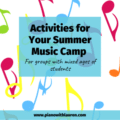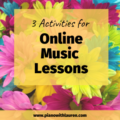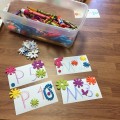This post may contain affiliate links. As a Sheet Music Plus and Amazon Associate, I earn from qualifying purchases. That means I make a small commission (at no additional cost to you) if you purchase something from an affiliate link.
Offering occasional group lessons is a great way to boost your teaching income. In my piano studio, I have offered various types of group classes. I’ve experimented with adding rhythm & ensemble classes once a month and also having occasional performance classes. You can read about how to add group lessons to your piano studio here.
When offering occasional group classes, it is easiest for me to leave the groups open to students of any level. Doing so often leaves me with a group class of students at various levels. Although it can be tricky to have a music class of various ages, I’ve found a few activities that work well for those classes.
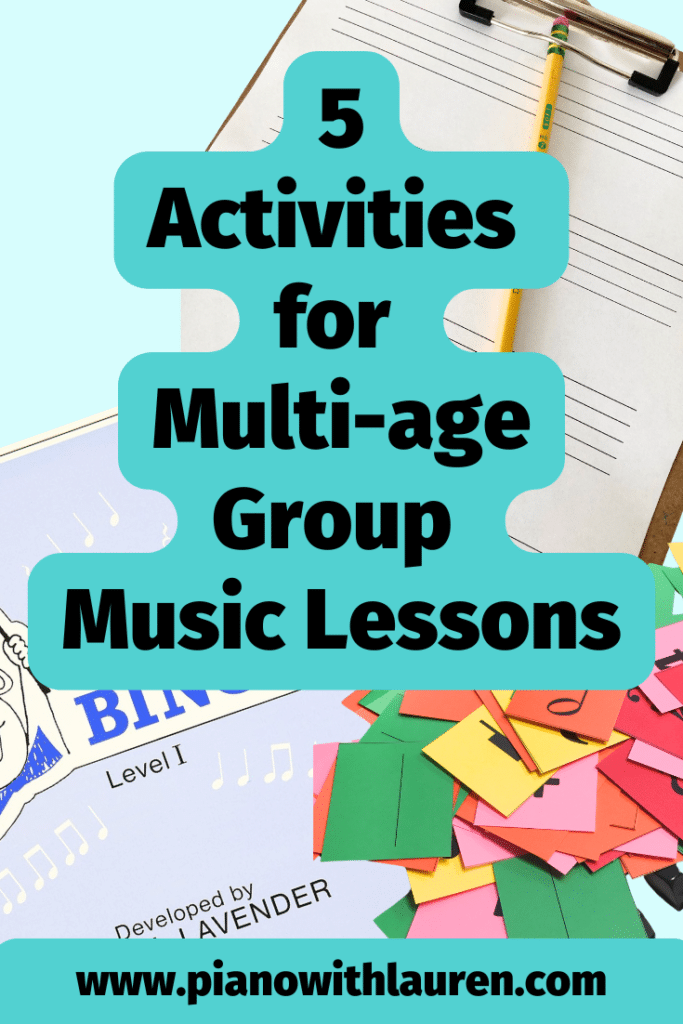
Here are my favorite five activities for multi-age group music lessons:
#1 – Ensemble Music
This is one of my favorite activities for students in multi-age group lessons. I started making piano ensemble arrangements for this exact purpose. In my ensemble arrangements, there are individual parts for melody, bass, and harmony. Each part has variations that range in difficulty so that students of various levels can play together.
Christmas Piano Ensemble Music
#2 – Rhythm Bingo
My students absolutely love playing this game. The Bingo cards have two sides- one is harder than the other.
Level 1 Rhythm Bingo | Level 2 Rhythm Bingo
Tips for multi-age group classes:
- When there are older students in the group, have the older student clap the rhythm for the others. Giving older students this task makes them feel special and advanced.
- For younger students, just show the students the rhythm that was called so they can find it on their own Bingo card. “Hunting” for the rhythm on their own Bingo card will still help them learn the rhythm.
For seasonal classes: You can change the markers used for Bingo throughout the season. You can use tiny spiders as markers in a Halloween group class or little bells during the holidays. You can also use colored pom-poms to coordinate with the seasons, such as red and pink for Valentine’s or green for St. Patrick’s Day.
#3 – Flashcard Race
I divide students into two teams and then put them into two separate lines. I flash a note-naming
or interval card in front of students and the first student to name it correctly gets a point for their team. Once a student guesses a note, he or she moves to the back of the line.
For a multi-age group class, an older student could administer the race or tally points. There could also be two different races, one easier and one more advanced. If having two different races, be sure to separate your flashcards prior to the class. You don’t want to waste class time dividing flashcards.
My favorite flashcards:
#4 – Music Theory
Print blank staff paper ahead of time. I love using this website to print sheet music in various sizes. Younger students typically need to draw on a bigger staff.
For a multi-age group class, give each student a sheet of staff paper. Young students can practice drawing whole note line and space notes on the staff. Older students can practice drawing scales, chords, or key signatures. You can tailor this to exactly what each student knows. You can also make a game out of it by asking students to draw something on the staff and then tell the class about it.
For group class activities, my students are often gathered on the floor or spread across the waiting area. So having clipboards handy for students to draw on is helpful.
# 5 – Rhythm Cards
These cards can be used in many different ways. Students can create rhythms, math problems, complete measures, add bar lines, etc.
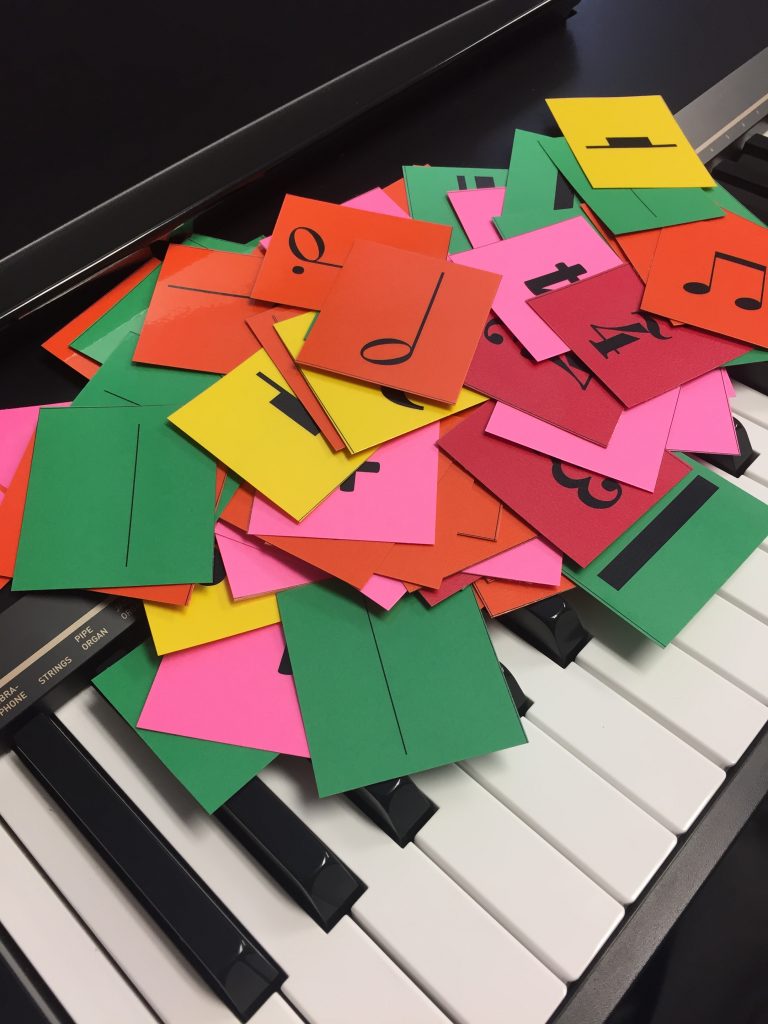
Tips for a multi-age group lesson:
- Prior to class, make little packs of the rhythm cards so that the cards are ready for class. I prep the cards and put them in several different bags, creating various packs by level.
- Make one pack of simple note values for the beginners (quarter, half, dotted-half, whole). For another age of students, you can add a rest to their pack. Older students can have a pack of cards that have the dotted-quarter rhythm, time signatures, and more rests in their pack. You can also include bar lines if needed.
- Make games using the cards. Younger students can make their own rhythm or make one measure with 3 or 4 counts. Older students can be grouped together in pairs. Have one student make an incomplete measure and then the other student can complete the measure with one note or rest. Students can also choose a time signature and make a rhythm with several measures together.

Lauren teaches piano to students of all ages. She enjoys creating resources for her students and teachers. She is the author of Ready for Theory®. For personalized help, check out the consultations page for teachers.

